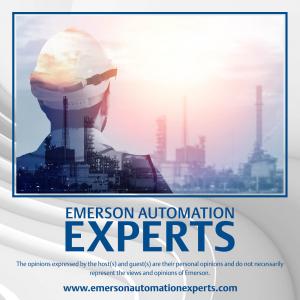Emerson Automation Experts

Safer Terminal Operations with Continuous Corrosion Monitoring Podcast
Many refineries and oil terminals are located beside major stretches of water, either sea or river, to provide a cost-effective transportation route for incoming crude oil and feedstock, and for outing finished products. If left undetected, a hydrocarbon leak resulting from corrosion in a jetty line will go straight into the local water sources causing serious environmental damage to the local ecosystem and to company reputation. Using continuous corrosion monitoring to proactively collect data on pipe integrity over time, operators can avoid environmental incidents, as well as increase operational performance, reduce unplanned outages, limit personnel in hazardous locations, and reduce the need for reactive maintenance. In this storage terminal safety podcast, we are joined by Emerson's Jake Davies to talk ways we're helping industry leaders keep an eye on corrosion and erosion with innovative continuous and remote corrosion monitoring technologies Visit the Storage Terminal Safety and the Corrosion & Erosion Monitoring sections on Emerson.com for more on the technologies and solutions to help you drive safer, more reliable, and more efficient terminal operations. Transcript Jim: Hello, everybody. I'm Jim Cahill with the Emerson Automation Experts blog. And as part of our continuing podcast series on enabling storage terminals safety, I'm joined today by Jake Davies. And Jake is a director of Global Product Marketing for Emerson's Corrosion and Erosion Solutions business. We'll be discussing ways to monitor for corrosion in storage, terminal, jetty pipelines, and other spots. Welcome, Jake. Jake: Thanks for having me, Jim. Great to be here. Jim: Well, it's great to be doing this. Let's begin by having you share with our listeners your educational background and path to your current role. Jake: Sure. Okay. It's a long path, but it started with, I guess, a formal university education in engineering. I had a little time in industry, not the process industry, but more electronics. And then I went back to university and did a Ph.D. in ultrasonic engineering. And then after that, and in fact, while I was doing my Ph.D., a Ph.D. colleague of mine was researching some corrosion monitoring opportunities. And that actually led, just as I finished my Ph.D., to the formation of a startup company which was called Permasense. So, I joined that after my Ph.D. And really, at that time, we were two people. So, I did a lot of different roles ranging from customer support, design, engineering, supply chain management, production. I used to make some of the equipment myself. So, I really did a lot of roles in that startup as you can imagine. And that startup became very successful. The technology was well adopted by the oil and gas industry. And in fact, that company was acquired by Emerson in 2016. So,






 Visit Podcast Website
Visit Podcast Website RSS Podcast Feed
RSS Podcast Feed Subscribe
Subscribe
 Add to MyCast
Add to MyCast